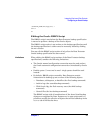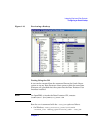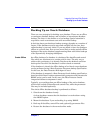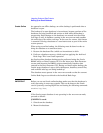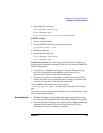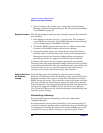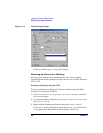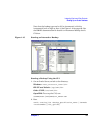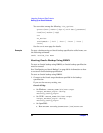
Integrating Oracle and Data Protector
Backing Up an Oracle Database
Chapter 1 55
Backing Up an Oracle Database
There are two strategies for backing up a database. These are an offline
or consistent database backup, and an online or inconsistent database
backup. The latter is also known as a hot backup. Special attention is
required to reach a consistent state with an online backup.
A decision about your database backup strategy depends on a number of
factors. If the database must be open and available all the time, then
online backup is your only choice. If you can afford to have the database
offline at a certain time, then you are more likely to make periodic offline
backups of the entire database, supplementing them with online backups
of the dynamically changing tablespaces.
Oracle Offline An offline backup of a database is a backup of the datafiles and control
files which are consistent at a certain point in time. The only way to
achieve this consistency is to cleanly shut down the database and then
back up the files while the database is either closed or mounted.
If the database is closed, the offline backup of an Oracle target database
can be performed using a Data Protector filesystem backup specification.
In this case, the Data Protector Disk Agent is used.
If the database is mounted, a Data Protector Oracle backup specification,
based on which Data Protector automatically generates and executes the
RMAN script, can be used. In this case, the Data Protector Oracle
integration software component is used.
Typically, you would perform an offline backup of the entire database,
which must include all datafiles and control files, while the parameter
files may be included optionally.
The whole offline database backup is performed as follows:
1. Shut down the database cleanly.
A clean shutdown means that the database is not shut down using
the ABORT option.
2. Mount the database if you are backing it up using RMAN.
3. Back up all datafiles, control files and, optionally, parameter files.
4. Restart the database in the normal online mode.



